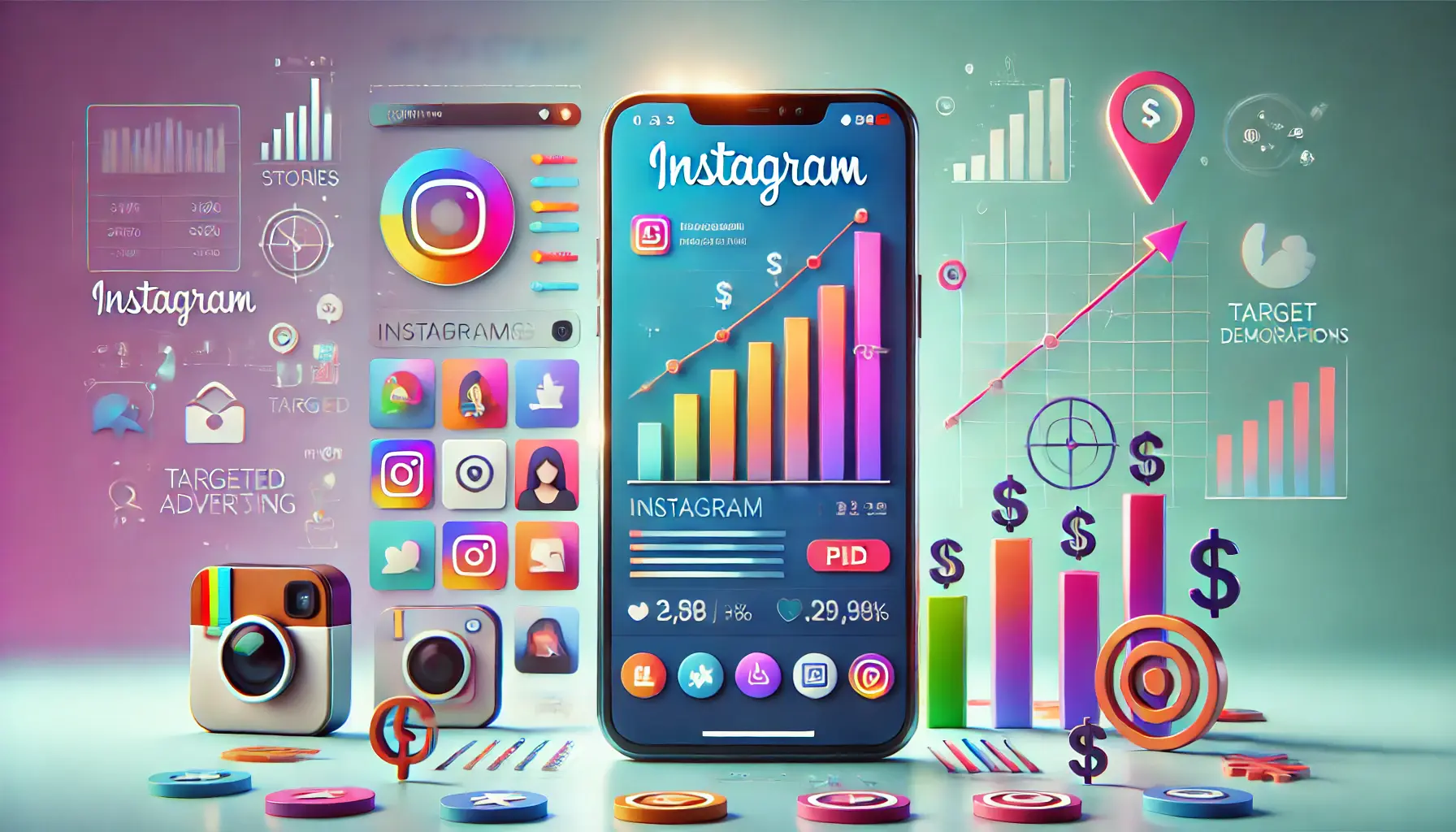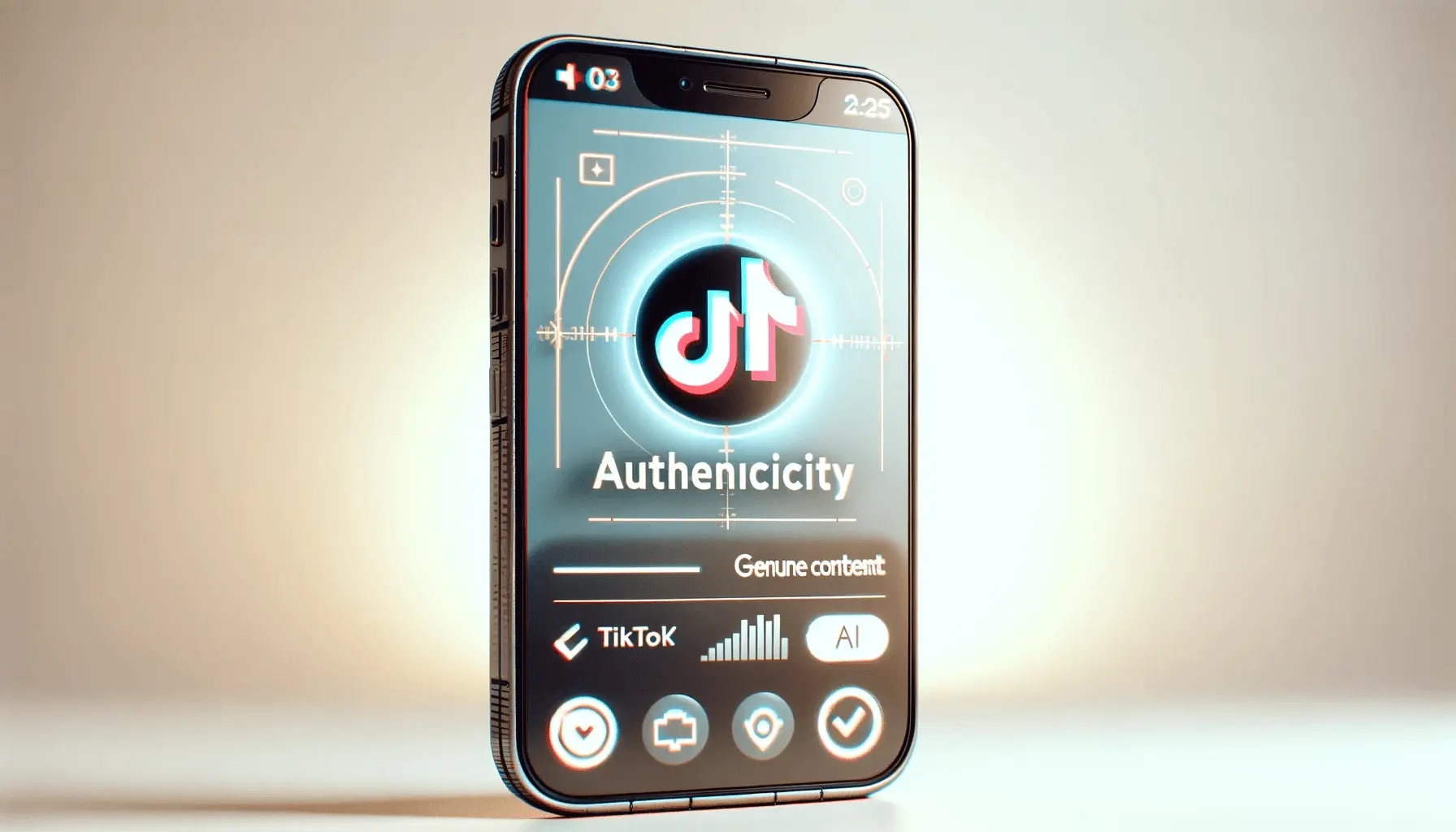The landscape of paid advertising is undergoing a transformative shift, especially on platforms like TikTok.
As we venture into 2024, it’s crucial to understand how these changes will impact marketers and businesses.
This article delves into the evolving realm of TikTok ads, offering insights and forecasts for the upcoming year.
TikTok, known for its dynamic and engaging content, has become a powerhouse in the digital advertising world.
The platform’s unique format and vast, diverse audience present unparalleled opportunities for brands to connect with consumers in innovative ways.
In 2024, we anticipate significant advancements in TikTok’s advertising capabilities, driven by emerging trends and technological innovations.
- The Rise of Influencer Marketing on TikTok
- Strategic Content Creation and User Engagement
- Technological Advancements in TikTok Advertising
- Adapting to Evolving Consumer Behaviors on TikTok
- Emerging Markets and Global Expansion of TikTok Ads
- Challenges and Solutions in TikTok Advertising
- Future Outlook: The Evolution of TikTok Ads Beyond 2024
- Envisioning the Future of Paid Advertising on TikTok
- TikTok Paid Advertising: Essential FAQs
The Rise of Influencer Marketing on TikTok
Influencer marketing is set to dominate TikTok advertising in 2024.
This trend capitalizes on the authentic connections influencers have with their followers, offering a more organic approach to brand promotion.
Influencers’ ability to craft content that resonates with their audience makes them invaluable assets for brands looking to enhance their presence on TikTok.
Collaborations between brands and influencers are expected to become more strategic and data-driven. With TikTok’s advanced analytics tools, brands can now identify influencers whose followers align closely with their target demographics, ensuring more effective and impactful campaigns.
Emerging Trends in TikTok Ad Formats
TikTok’s innovative ad formats, such as branded hashtags and in-feed ads, are evolving.
In 2024, we foresee a surge in the use of immersive and interactive ad formats.
These formats are designed to engage users more deeply, encouraging participation and fostering a stronger connection between the brand and its audience.
For instance, augmented reality (AR) filters and branded challenges are gaining traction.
These tools not only enhance user engagement but also encourage user-generated content, amplifying the reach and impact of advertising campaigns.
Key Point: Influencer marketing and interactive ad formats are pivotal in TikTok’s advertising evolution, offering brands innovative ways to engage with audiences.
Strategic Content Creation and User Engagement
As we move into 2024, content creation on TikTok is becoming more strategic, with a focus on maximizing user engagement.
Brands are increasingly leveraging TikTok’s unique features to create content that resonates with and captivates their audience.
Understanding the nuances of what makes content successful on TikTok is key.
This includes not only the creative aspect but also timing, trends, and audience preferences.
Brands that master this blend of art and science will see a significant boost in their campaign effectiveness.
Key Components of Successful TikTok Content
- Authenticity: Authentic content that aligns with a brand’s values and resonates with the audience is crucial. Users on TikTok value genuine and relatable content over overtly promotional material.
- Trend Utilization: Capitalizing on current trends and challenges is a powerful way to increase visibility and engagement. Brands that skillfully integrate trends into their content strategy can achieve viral status.
- Interactive Elements: Incorporating interactive elements like polls, Q&A sessions, and challenges encourages user participation and increases engagement rates.
Maximizing Engagement Through User Interaction
Engagement on TikTok goes beyond likes and shares.
In 2024, brands are focusing on creating a two-way conversation with their audience.
This involves actively responding to comments, participating in trends, and creating content that invites user interaction.
By fostering a community around their brand, businesses can build deeper relationships with their audience, leading to increased loyalty and advocacy.
This approach is particularly effective on TikTok, where community and creativity are highly valued.
Idea: Brands can enhance engagement on TikTok by focusing on authenticity, leveraging trends, and fostering interactive and community-driven content strategies.
Technological Advancements in TikTok Advertising
The year 2024 is witnessing significant technological advancements in TikTok’s advertising platform.
These innovations are not only enhancing the user experience but also providing advertisers with more sophisticated tools to reach and engage their target audience effectively.
From AI-driven analytics to augmented reality experiences, TikTok is at the forefront of integrating cutting-edge technology into its advertising strategies.
This integration is transforming how brands interact with consumers, making advertising more personalized and impactful.
AI and Machine Learning in Ad Targeting
- Predictive Analytics: AI-driven predictive analytics are being used to forecast user behavior and preferences, allowing for more targeted and relevant ad campaigns.
- Personalization: Machine learning algorithms are enabling hyper-personalized ad experiences, ensuring that users see content that aligns with their interests and behaviors.
Augmented Reality (AR) in Advertising
AR technology is revolutionizing TikTok ads by creating immersive and interactive experiences.
Brands are using AR filters and virtual try-ons to engage users in a novel and memorable way.
This not only enhances user engagement but also provides a unique way for brands to showcase their products.
As AR technology continues to evolve, we can expect even more innovative and captivating advertising experiences on TikTok.
This will likely lead to higher engagement rates and a stronger emotional connection between brands and their audience.
Truth: Technological advancements, particularly in AI and AR, are significantly enhancing the effectiveness and appeal of TikTok’s advertising platform.
Adapting to Evolving Consumer Behaviors on TikTok
In 2024, adapting to the rapidly evolving consumer behaviors on TikTok is crucial for advertisers.
As the platform’s user base grows and diversifies, understanding and responding to these changes is key to successful advertising.
Consumers on TikTok are looking for more than just entertainment; they seek authenticity, connection, and value from the content they engage with.
Brands that recognize and adapt to these expectations are more likely to succeed in this dynamic environment.
Shifts in User Preferences and Expectations
- Value-Driven Content: Users are increasingly favoring content that offers value, be it educational, informative, or entertaining. Brands that provide this type of content can build a loyal following.
- Community Engagement: There’s a growing emphasis on community and interaction. Brands that engage with their audience and foster a sense of community are seeing higher engagement and loyalty.
Responding to the Demand for Authenticity
Authenticity is a cornerstone of TikTok’s culture.
Users gravitate towards brands that are genuine and transparent in their messaging.
This trend is pushing advertisers to rethink their content strategies, focusing more on storytelling and less on hard selling.
Brands that successfully convey their story and values in a relatable and authentic manner are resonating more with TikTok users.
This approach not only enhances brand image but also fosters trust and loyalty among the audience.
Note: Adapting to evolving consumer behaviors, particularly the demand for value-driven content and authenticity, is essential for brands to thrive on TikTok in 2024.
Emerging Markets and Global Expansion of TikTok Ads
As we progress through 2024, TikTok’s global reach is expanding into new and emerging markets.
This expansion presents unique opportunities for advertisers to tap into diverse audiences and explore untapped potential.
Understanding the nuances of these markets is crucial for creating effective and culturally relevant ad campaigns.
Brands are now looking beyond traditional markets and exploring ways to connect with audiences in different regions.
This global approach is not only increasing their reach but also enriching their brand narrative with diverse perspectives.
Adapting to Local Cultures and Trends
- Cultural Sensitivity: Successful global campaigns on TikTok require an understanding of local cultures and sensitivities. Tailoring content to resonate with local audiences is key.
- Localized Content: Creating localized content that reflects regional trends, languages, and cultural nuances can significantly enhance campaign effectiveness.
Exploiting Regional Market Trends
Each market has its unique trends and consumer behaviors.
Brands that can identify and leverage these regional trends are more likely to capture the attention of local audiences.
This requires thorough market research and a flexible content strategy that can adapt to different cultural contexts.
Moreover, collaborating with local influencers and creators can provide valuable insights into regional preferences, further enhancing the relevance and impact of TikTok ad campaigns in these markets.
Featured Info: The global expansion of TikTok ads offers opportunities for brands to engage with diverse audiences by adapting to local cultures and exploiting regional market trends.
Challenges and Solutions in TikTok Advertising
While TikTok’s advertising landscape in 2024 offers immense opportunities, it also presents unique challenges.
Advertisers need to navigate these challenges strategically to maximize their campaign effectiveness.
Understanding these obstacles and implementing effective solutions is key to successful advertising on TikTok.
From algorithm changes to competition for user attention, advertisers face a dynamic environment that requires agility and creativity.
Let’s explore some of these challenges and the solutions that can help overcome them.
Navigating Algorithm Changes and Content Visibility
- Algorithm Adaptation: TikTok’s algorithm is constantly evolving. Staying informed about these changes and adapting content strategies accordingly is crucial for maintaining visibility.
- Content Optimization: Optimizing content for TikTok’s algorithm, such as using relevant hashtags and trending sounds, can help increase the chances of content being seen by a wider audience.
Competing for User Attention in a Crowded Space
As more brands flock to TikTok, the competition for user attention intensifies.
Standing out in this crowded space requires creativity and innovation.
Brands need to craft unique and captivating content that can cut through the noise and capture user interest.
Engaging storytelling, high-quality visuals, and interactive elements can help differentiate a brand’s content.
Additionally, leveraging TikTok’s latest features and trends can provide a competitive edge in attracting user attention.
False Information: Assuming a one-size-fits-all approach in TikTok advertising can lead to ineffective campaigns. Advertisers must tailor their strategies to overcome specific challenges unique to the platform.
Future Outlook: The Evolution of TikTok Ads Beyond 2024
Looking beyond 2024, the future of TikTok advertising is poised for continued evolution and growth.
As technology advances and user behaviors shift, TikTok is expected to introduce more innovative features and advertising solutions.
This forward-looking perspective is essential for advertisers who want to stay ahead in the ever-changing digital landscape.
The potential for new ad formats, deeper integration of AI and AR, and a stronger emphasis on personalized user experiences are just a few areas where TikTok could redefine the advertising game in the years to come.
Anticipating New Ad Formats and Innovations
- Interactive and Immersive Ads: The future may see the rise of even more interactive and immersive ad formats, providing users with engaging and memorable brand experiences.
- Integration of Emerging Technologies: As new technologies emerge, TikTok could integrate these into its advertising platform, offering novel ways for brands to connect with audiences.
Personalization and User Experience
Personalization will continue to be a key focus, with TikTok leveraging data and AI to deliver highly relevant ads to users.
This could lead to more effective targeting and higher engagement rates, benefiting both users and advertisers.
Enhancing the user experience will remain paramount.
TikTok will likely continue to refine its platform to ensure that ads are not only effective but also add value to the user’s overall experience on the app.
Idea: The future of TikTok advertising holds exciting possibilities, with advancements in technology and personalization set to offer more dynamic and effective ways for brands to engage with audiences.
Envisioning the Future of Paid Advertising on TikTok
As we look towards the future of paid advertising on TikTok, it’s clear that the platform is on a trajectory of continuous innovation and growth.
The evolution we’ve witnessed and anticipate in TikTok’s advertising landscape is not just about technological advancements but also about understanding and adapting to the ever-changing consumer behaviors and preferences.
The key to success in this dynamic environment lies in the ability of brands to stay agile, creative, and responsive to these changes.
The future of TikTok advertising is not just about reaching a vast audience but engaging with them in meaningful, authentic, and innovative ways.
Key Takeaways for Future TikTok Advertising Strategies
- Embrace Emerging Technologies: Brands should be ready to incorporate new technologies like AI and AR to create more engaging and personalized ad experiences.
- Understand and Adapt to Consumer Behaviors: Keeping a pulse on the evolving preferences and behaviors of TikTok users will be crucial for creating relevant and effective ad content.
- Innovate with Ad Formats: The future will likely bring new and more immersive ad formats. Brands should be prepared to experiment with these to stand out.
In conclusion, the future of paid advertising on TikTok is poised to be as dynamic and impactful as the platform itself.
Brands that can navigate this landscape with a blend of creativity, strategic thinking, and technological adoption will find themselves at the forefront of digital advertising success.
As TikTok continues to grow and evolve, so too will the opportunities for brands to connect with audiences in this vibrant and ever-changing space.
Enjoyed the article? Let its author handle your social media ads. Visit our service page to get started!
TikTok Paid Advertising: Essential FAQs
As TikTok continues to revolutionize the digital advertising landscape, numerous questions arise about its paid advertising mechanisms.
Here, we address some of the most frequently asked questions to provide clarity and insight into TikTok’s paid advertising in 2024.
In 2024, TikTok’s key ad formats include in-feed ads, branded hashtags, AR filters, and branded challenges, offering diverse and interactive advertising options.
TikTok’s algorithm plays a crucial role in ad success by determining content visibility based on user engagement, relevance, and content quality.
Yes, small businesses can effectively advertise on TikTok by leveraging creative content, engaging with trends, and utilizing TikTok’s targeted ad tools.
Influencers are pivotal in TikTok advertising, offering authentic brand promotion through their engaged and loyal follower base.
Content authenticity is vital in TikTok ads, as users prefer genuine, relatable content that aligns with their interests and values.
Best practices include using TikTok’s analytics for audience insights, aligning content with user interests, and leveraging demographic targeting features.
TikTok personalizes ads using AI and machine learning to analyze user behavior and preferences, ensuring relevant and engaging ad experiences.
Future trends include more advanced AI integration, immersive AR experiences, and a greater focus on personalized, interactive ad content.










